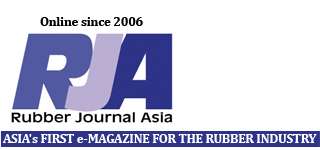GLOBAL supplier of rubber products, Weir Minerals Linatex, a business unit within Weir Group, has launched two new hose products and one product enhancement.
Its new preformed hose bend, which is intended as a replacement for hard-walled pipe bends in slurry transfer pipelines, provides an improvement in wear life over standard metal pipe, especially when abrasion wear and vibration are issues.
The Linatex tube provides long-lasting wear resistance in a rubber compound for wet slurry applications.
Linatex hose bends are stocked in 4 inch to 16 inch inside-diameter sizes in both 45? and 90? three-dimensional radii.
Further, the company has also introduced a new wear indicator system, which will assist in dealing with many of the issues regarding the maintenance of hose in highly abrasive environments. It provides 24-hour-a-day monitoring.
Installation of the Linatex wear indicator system eliminates the need for physical inspections and costly emergency maintenance downtime. Unexpected hose failures that can cause environmental spills and health and safety incidents will be substantially reduced, states the company.
Unlike other wear indication systems, which only check for a break in the wire (continuity) to detect a go/no-go hose failure point, the Linatex wear indicator system senses a change in resistance as measured by ohms. This precision measurement provides more accurate results.
The wear indicator system is an early warning system for hoses that handle highly abrasive materials.
Linatex Cut End Hose and Couplings
Weir Minerals Linatex has also enhanced its previous cut end hose by increasing the standard working pressure to 150 psi, as well as established a new coupling vendor to provide better aesthetics and performance in its reusable lightweight aluminium flanged couplings.
The Linatex cut end hose system continues to provide a high-quality abrasion-resistant slurry hose that enables fast and easy on-site assembly, limiting downtime and maintenance costs.
sOURCE: Engineering News
